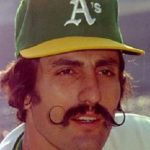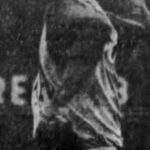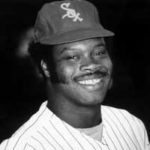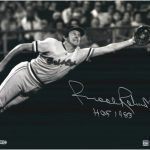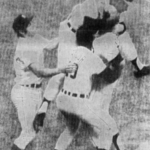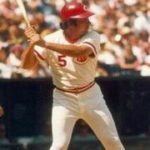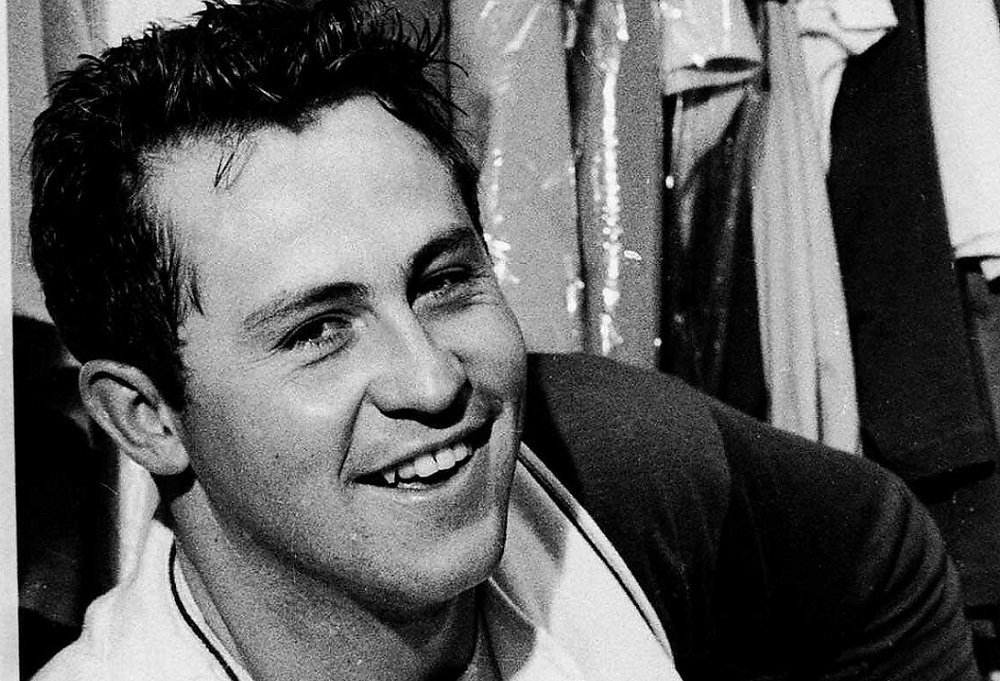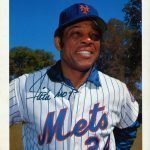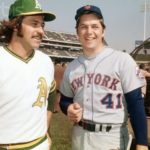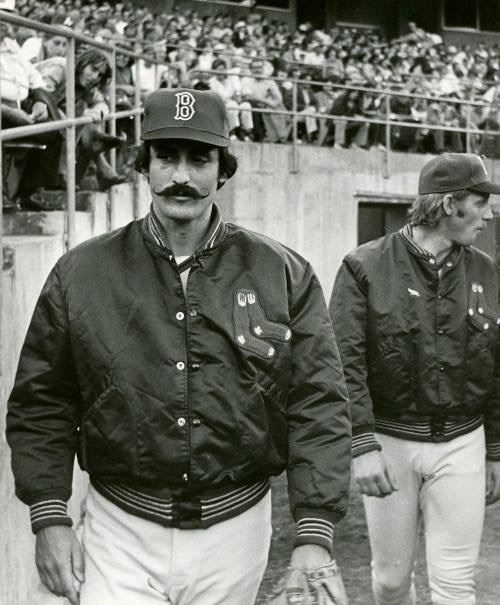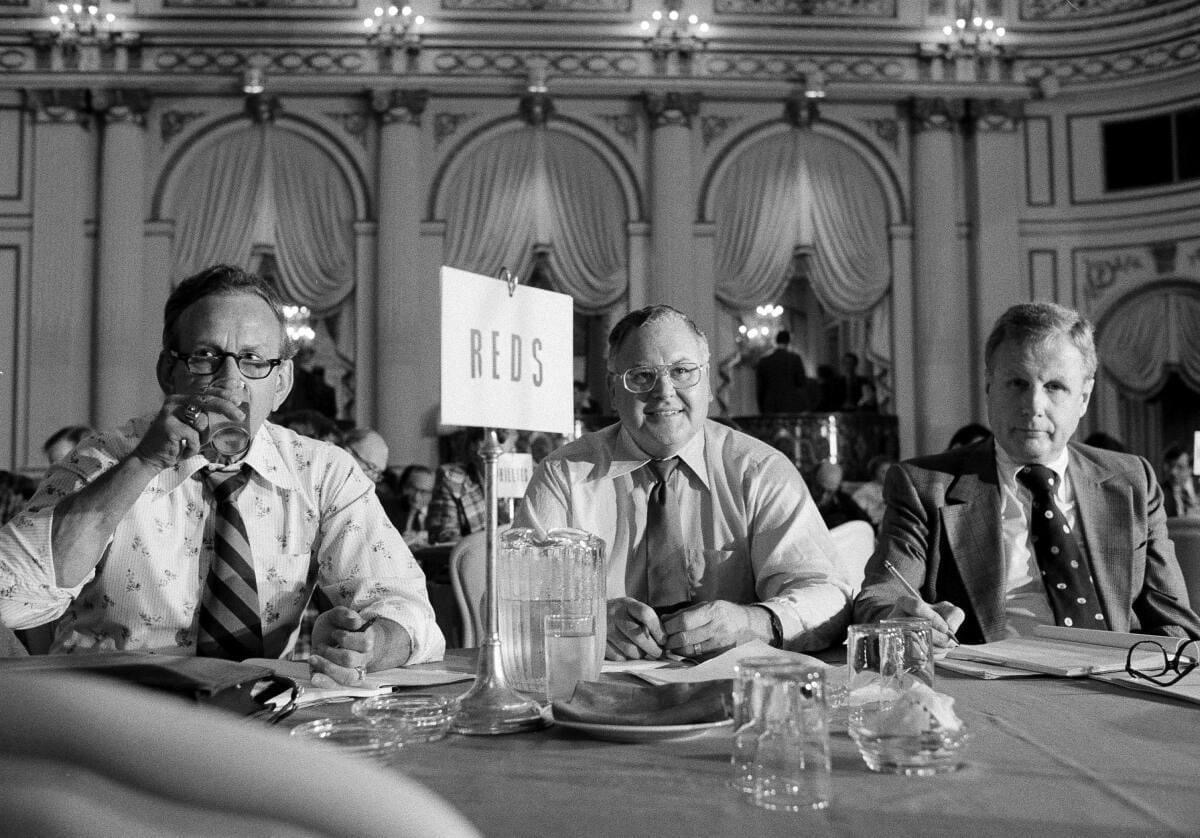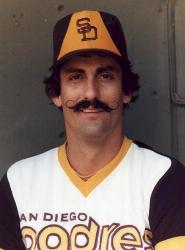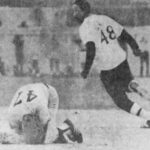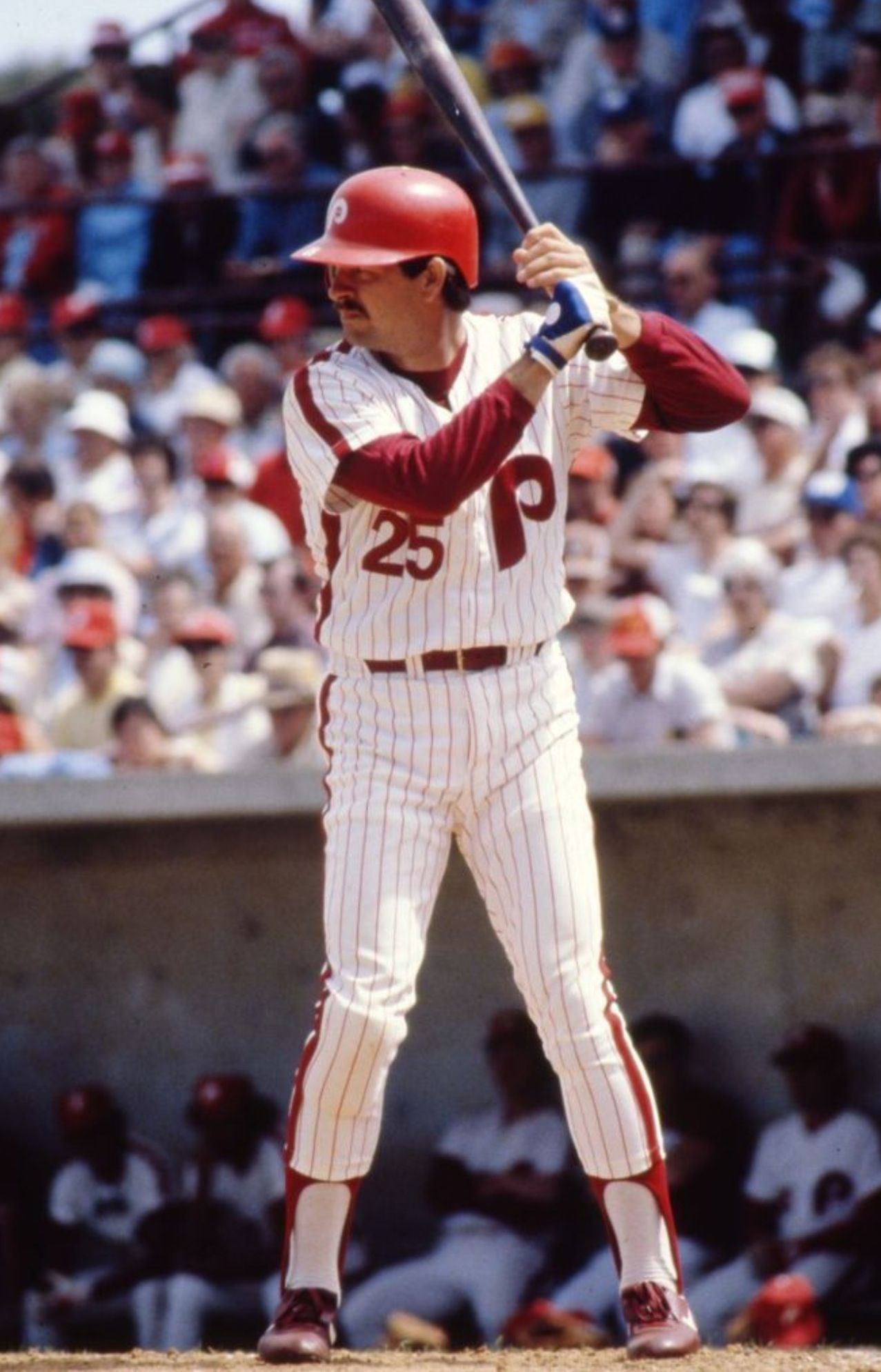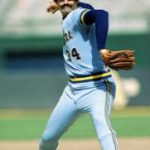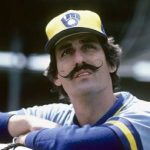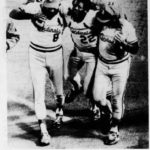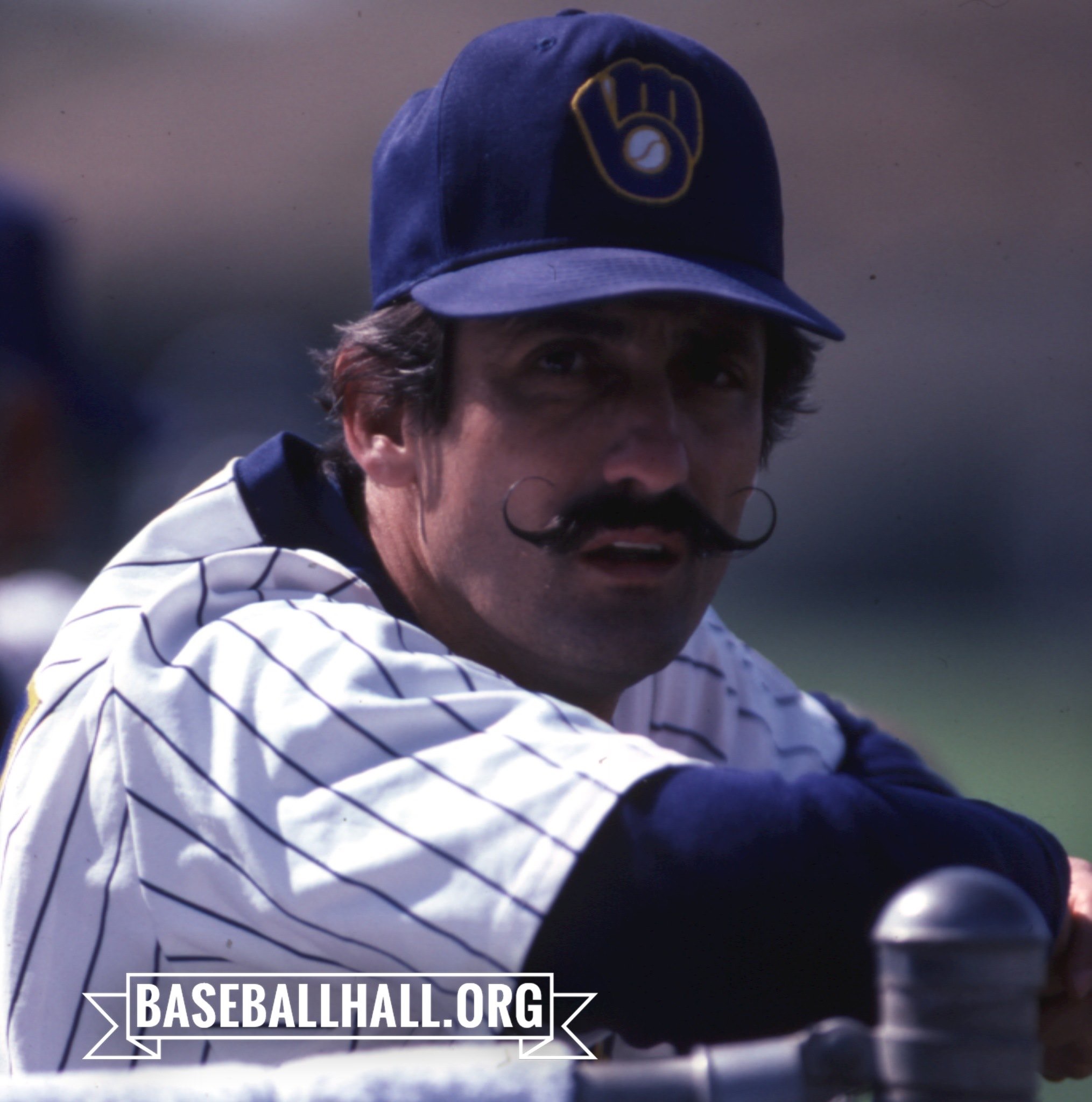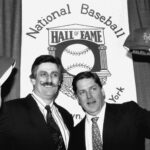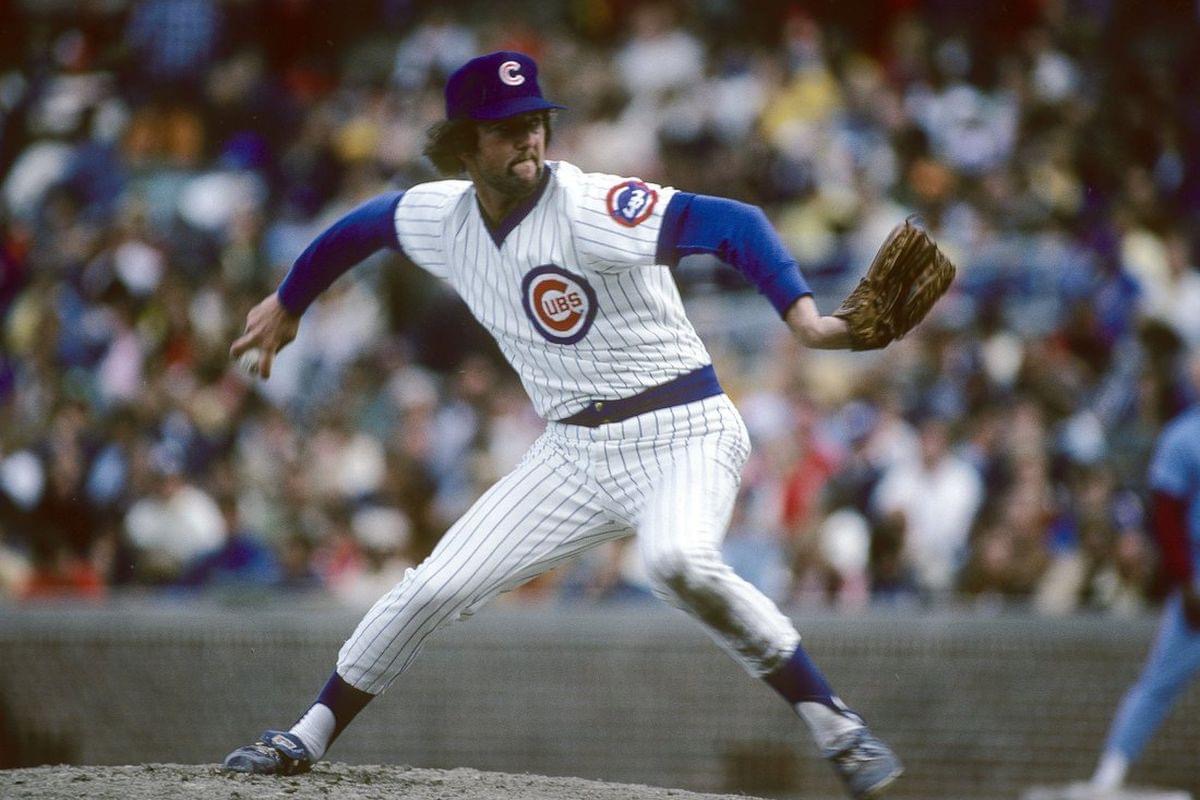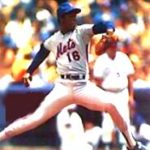Rollie Fingers Essentials
Positions: Relief Pitcher
Bats: Right * Throws: Right
Height: 6′-4″ Weight: 190
Born: August 25, 1946 in Steubenville, OH USA
High School: Upland HS (Upland, CA)
College/School: Chaffey College (Rancho Cucamonga, CA)
Debut: September 14, 1968 1.1 IP, 4 H, 0 SO, 1 BB, 4 ER
Last Game: September 17, 1985 0.1 IP, 1 H, 1 SO, 0 BB, 1 ER
Hall of Fame: Inducted as Player in 1992. (Voted by BBWAA on 349/430 ballots)
View Rollie Fingers’s Page at the Baseball Hall of Fame (plaque, photos, videos).
Full Name: Roland Glen Fingers
View Player Bio from the SABR BioProject
Notable Events and Chronology for Rollie Fingers Career
Intro
Fingers was the quintessential reliever of his time, used when the situation demanded. He would often enter the game as early as the fifth inning, throwing as many as 120-130 innings in relief for a season. He was known for his handlebar mustache, which he first grew as a member of the Oakland A’s “Mustache Gang” in response to owner Charlie Finley’s cash incentive.
Unform Number
#32 (1968), #34 (1969-1982, 1984-1985)
Best Season
He was as close to automatic as a reliever had ever been. In 78 innings he walked just 13 and flashed a 1.04 ERA. He saved 28 and won six, figuring in 55% of Milwaukee’s victories in the strike-shortened season. He won both the Cy Young and the MVP award
Factoid 1
Rollie Fingers recorded the final out of the 1972 World Series, Oakland’s first championship. He pitched the last two innings for the save.
Factoid 2
Rollie Fingers earned the win or a save in eight of Oakland’s 12 victories in their three World Series championships, from 1972-1974.
Transition
December 24, 1964: Signed by the Kansas City Athletics as an amateur free agent; November 1, 1976: Granted Free Agency; December 14, 1976: Signed as a Free Agent with the San Diego Padres; December 8, 1980: Traded by the San Diego Padres with a player to be named later, Bob Shirley, and Gene Tenace to the St. Louis Cardinals for Terry Kennedy, Steve Swisher, Mike Phillips, John Littlefield, John Urrea, Kim Seaman, and Al Olmsted. The San Diego Padres sent Bob Geren (December 10, 1980) to the St. Louis Cardinals to complete the trade; December 12, 1980: Traded by the St. Louis Cardinals with Ted Simmons and Pete Vuckovich to the Milwaukee Brewers for Sixto Lezcano, David Green, Lary Sorensen, and Dave LaPoint; November 8, 1984: Granted Free Agency; January 16, 1985: Signed as a Free Agent with the Milwaukee Brewers; November 14, 1985: Released by the Milwaukee Brewers.
Strengths
His rubber arm. Fingers pitched at least 100 innings in relief eight times in his career.
Weaknesses
None. Fingers was durable, had excellent control, rarely gave up the longball, was a fine defensive pitcher, and he even hit the ball well, though his batting record was erratic after the DH was implemented.
Strange Deals
Rollie Fingers was part of a few historic deals and non-deals during his career. On June 18, 1976, A’s owner Charlie Finley announced he had swapped Fingers and Joe Rudi to the Boston Red Sox, and also that he had sold Vida Blue to the New York Yankees. However, Commissioner Bowie Kuhn voided the deals, citing that they were “not in the best interest of baseball.” While an enraged Finley sued MLB, the A’s sat Fingers, Rudi and Blue on the bench until the issue was resolved in Kuhn’s favor in June. Fingers was briefly a St. Louis Cardinal. On December 8, 1980, the San Diego Padres dealt their star reliever to St. Louis in an 11-player trade that brought Terry Kennedy to San Diego. Just four days later, Whitey Herzog, having already acquired Bruce Sutter to be his closer from the Chicago Cubs, sent Fingers packing again. The Cards’ mastermind sent Fingers, Ted Simmons, and Pete Vuckovich to the Milwaukee Brewers for Lary Sorensen, Sixto Lezcano, and minor leaguers David Green and Dave LaPoint. In so doing, Herzog traded the next two winner’s of the AL Cy Young award to Milwaukee. But he got the last laugh, defeating Milwaukee in the 1982 World Series in seven games.
Full Biography:
One of the greatest relievers of all time, Rollie Fingers helped to define the role of the closer for future generations of relief pitchers. Prior to the 1960s, most pitchers who worked out of their team’s bullpen were either starters who were past their prime, or men who simply weren’t good enough to make their squad’s starting rotation. However, pioneers such as Hoyt Wilhelm, Elroy Face, and Lindy McDaniel demonstrated during the 1960s that relief pitching could be viewed very much as an art, and that relievers often had the ability to assume an extremely prominent role for their respective teams. After Wilhelm, Face, McDaniel, and a few others helped to change the general perception held towards men who worked out of the bullpen, hurlers such as Rollie Fingers, Sparky Lyle, Rich Gossage, Bruce Sutter, and Mike Marshall expanded on the role of the reliever during the 1970s. No one, though, did more to define the role of the modern closer than Fingers, who was the game’s premier relief ace for much of the decade.
Biography:
Born in Steubenville, Ohio on August 25, 1946, Roland Glen Fingers spent the early part of his major league career very much in limbo. After graduating from Upland High School in California, Fingers signed with the Kansas City Athletics as an amateur free agent in 1964. He spent the next four years working his way up the A’s farm system as a starting pitcher. Still viewed as a starter when he joined the A’s (who had since moved to Oakland) towards the end of the 1968 season, Fingers experienced little in the way of success over the course of the next two-and-a-half seasons, as he shuttled back and forth between the team’s bullpen and starting rotation. Finally, early in 1971, after Fingers found himself able to finish only four of his 35 career starts, Oakland manager Dick Williams placed him in the bullpen permanently. The lanky 6’4″ righthander demonstrated that his manager made the right decision by finishing the year with a team-leading 17 saves.
Oakland’s acknowledged closer by the start of the 1972 campaign, Fingers pitched brilliantly while helping his team win the first of three consecutive world championships. Working strictly out of the bullpen, Fingers won 11 games, saved 21 others, compiled a 2.51 ERA, and struck out 113 batters in 111 innings, while allowing the opposition only 85 hits. Although he later evolved into more of a conventional closer, Fingers often entered games as early as the sixth or seventh inning to squelch an opposing rally. Manager Williams depended heavily on his ace reliever during the postseason, calling on Fingers in nine of Oakland’s 12 playoff and World Series contests. Fingers rewarded the faith his manager placed in him by allowing just eight hits and three earned runs in 16 total innings of work, and saving two of Oakland’s four victories during the team’s World Series triumph over favored Cincinnati.
Although Fingers became a far more recognizable figure after he used his outstanding sinker and slider to stifle Cincinnati’s powerful offense during the Fall Classic, he gained a measure of notoriety earlier in the year when he grew for the first time his signature handlebar mustache. After A’s slugger Reggie Jackson reported to spring training with a beard, Fingers and several other teammates decided to grow facial hair as well, in the hope that management would subsequently force Jackson to shave. However, Oakland’s colorful owner Charlie Finley instead offered $300 to the A’s player who did the best job of growing and maintaining his facial hair until Opening Day. Spurred on by Finley’s monetary incentive, Fingers decided to pattern his mustache after the images he saw of the players who competed during the latter stages of the 19th century. As Fingers later recalled, “Most of us would have grown one (mustache) anywhere on our bodies for $300.” The Oakland players eventually became known as the “Moustache Gang,” with Fingers and his waxed handlebar mustache serving as the group’s charter member.
Fingers followed up his outstanding 1972 campaign with exceptional performances in each of Oakland’s next two championship seasons. He won seven games, saved 22 others, and compiled a 1.92 ERA in 1973, before appearing in six of the seven World Series contests played against the New York Mets. Fingers worked nearly 14 innings against New York, allowing only one earned run, en route to compiling a microscopic 0.66 ERA. He won nine games the following year, while saving another 18 and leading all A.L. hurlers with 76 total appearances. Fingers then captured World Series MVP honors by beating the Dodgers with a 4 1/3 inning relief stint in Game One, before saving Games Three and Four.
Fingers remained in Oakland two more years, compiling 23 more victories and 44 additional saves, before leaving the team via free agency at the end of the 1976 campaign. He spent the next four years in San Diego, leading the National League in saves in both 1977 and 1978, with totals of 35 and 37, respectively, and winning three N.L. Rolaids Relief Ace Awards.
Believing that the 34-year old Fingers had seen his best days, the Padres traded their ace reliever to the Cardinals in a blockbuster 11-player deal at the conclusion of the 1980 season. However, with Bruce Sutter already anchoring the St. Louis bullpen, the Cardinals included Fingers in a seven-player trade with Milwaukee only four days later.
Back in the American League, Fingers had the greatest season of his career. He won six games and saved a league-leading 28 others during the strike-shortened 1981 campaign while compiling an exceptional 1.04 ERA and allowing only 55 hits in 78 innings of work. Fingers’ extraordinary performance earned him both the A.L. MVP and Cy Young Awards.
Fingers had another outstanding year for the Brewers in 1982, helping them advance to the World Series by saving 29 games and winning five others. However, an ailing elbow forced him to watch Milwaukee’s World Series loss to St. Louis from the sidelines. He then missed the entire 1983 campaign due to elbow problems, before returning to the Brewers in 1984 to post a 1.96 ERA and save 23 games.
Milwaukee manager Rene Lachemann discussed the metamorphosis Fingers underwent during his time away from the game, saying in 1984, “Before, he was a real power pitcher. Now, he’s the type of pitcher who has command of all his pitches. Another thing is the poise he has out there. He knows he’s going to get them out. He gives me a lot of confidence when he’s out there.”
The 1984 season turned out to be Fingers’ last effective year. He won only one of seven decisions the following season while posting an inordinately high 5.04 ERA and saving only 17 games – his second-lowest total since first becoming a closer in 1971. Fingers announced his retirement at the end of the year, having compiled a then-major-league record 341 saves. He also posted 114 victories and compiled a 2.90 ERA during his career. Fingers led his league in saves and appearances three times each, earned seven selections to the All-Star Team, placed in the top five in the Cy Young balloting twice, and finished in the top ten in the league MVP voting twice. Four times he finished in double-digits in victories, twice he saved more than 30 games, three times he finished with an ERA of less than 2 runs a game, and eight times he struck out more than three times as many men as he walked.
The members of the BBWAA elected Fingers to the Hall of Fame in 1992, in just his second year of eligibility. His induction made Fingers just the second relief pitcher to be so honored (Hoyt Wilhelm was the first).


